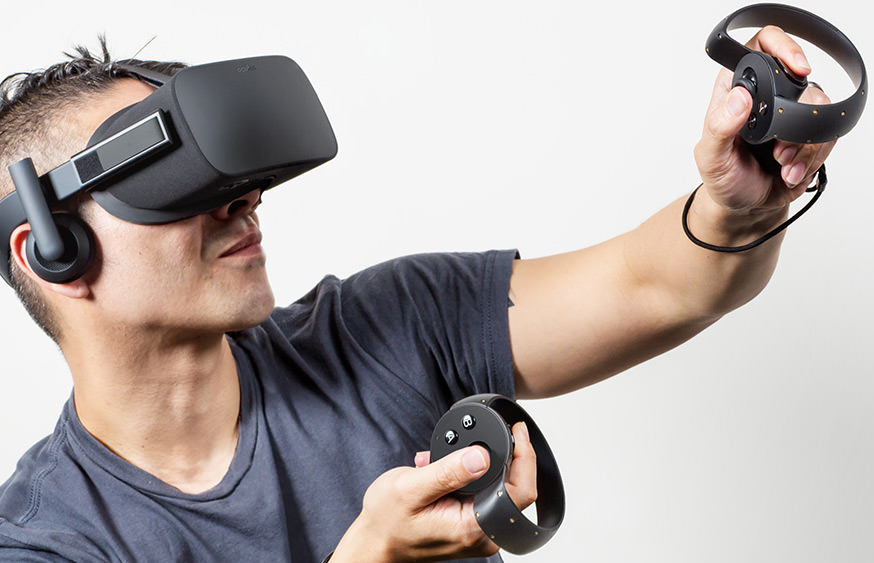In the early days of virtual reality gaming various limitations and trade-offs are inevitable because early hardware and software are never perfect. However, the main challenge for VR games will be performance of graphics adapters. Not all high-end graphics cards will be able to deliver 90 frames per second required to enjoy virtual worlds in all titles, according to Palmer Luckey, the founder of Oculus VR.
“[Performance of modern GPUs] is one of the issues in VR that cannot be solved at this time,” said Mr. Luckey in an interview with Tom’s Hardware. “We can make our hardware as good as we want, our optics as sharp as we can, but at the end of the day we are reliant on how many FLOPS the GPU can push, how high a framerate can it push? Right now, to get 90 frames per second [the minimum target framerate for Oculus VR] and very low latencies we need heaps of power, and we need to bump the quality of the graphics way down.”
Oculus VR needs to sell millions of its virtual reality headsets to make the VR platform viable for game developers. However, if one Oculus Rift costs $300 – $400 and requires an expensive graphics adapter to be used, not a lot of people will get the device. Total available market of $399+ graphics boards is around three million units a year. For many game developers, it makes no sense to design a game, if it cannot be sold in mass quantities.
Thanks to rapid evolution of graphics processing units by AMD and Nvidia, the founder of Oculus VR believes that several years down the road GPUs will become powerful enough to render VR games with decent framerate. Until then, virtual reality will be limited to expensive PCs.
“Many people think that the limiting factor for virtual reality is going to be the price,” said. Mr. Luckey. “The reality of it is, we are trying to make the hardware as affordable as possible, and the money will be made on software. The one thing people forget, however, is that the PC that it will take to run a VR experience will be the defining factor in the total cost. Even if we sell our hardware for as little as $100, or even $50, the PC that it will take to run VR will take the total cost up much further, and that isn't something we can control.”
Discuss on our Facebook page, HERE.
KitGuru Says: In general, if companies like Oculus VR, AMD, Nvidia, Intel and other want to make virtual reality gaming popular, they will probably need to team up in order to make hardware a little bit more affordable. Over time, VR headsets, decent graphics cards with enough TFLOPS to render VR games, controllers and other hardware will get cheaper. However, game designers need to see an installed base before they start a multi-million development project. Therefore, hardware makers will have to ensure that there are people with VR-capable PCs. Otherwise, VR will become another stereo-3D gaming…
 KitGuru KitGuru.net – Tech News | Hardware News | Hardware Reviews | IOS | Mobile | Gaming | Graphics Cards
KitGuru KitGuru.net – Tech News | Hardware News | Hardware Reviews | IOS | Mobile | Gaming | Graphics Cards




3D porn is what will make VR headsets sell in the first years. Then after a while, when enough of them are sold and graphics hardware has become more powerful, games will follow. The most important thing right now is to develop a standard VR API so all games will work with all brands of headsets.
Second that. The VR API statement. But im also sure that porn yet again get to play it’s role in developing this technology to become something for the masses. I dont think that it means that the masses will run out and buy this to use with porn but rather the few that do will throw a lot more money at it and then again the porn industry will throw a lot of capital behind the development. A wave the rest of us can then ride on and enjoy the benefits
work at home $509.96./day
uk…..
➤➤➤➤➤ joinjob.work
⚖⚖⚖⚖⚖⚖⚖⚖⚖⚖⚖⚖⚖⚖⚖⚖⚖⚖⚖⚖⚖⚖⚖⚖⚖⚖⚖⚖⚖⚖⚖⚖⚖⚖⚖⚖⚖
Nah it will be games, the majority of VR users use it for games mainly. There are quite a lot game demo’s out there for VR headsets and mods for some excisting games to make use of VR.
Not sure if you’ve tried VR yet, but the majority of its use is in the gaming. You can even find it on forums depending on which VR sets you use.
I don’t mind overspending on the GPU as long as games stop requiring expensive CPUs to run smoothly and here comes DX12 in the equation.
In addition, when they solve Crossfire/SLI latency issues using Split Frame Rendering it will bring a lot of affordable performance into play. Its Software mostly that needs tweaking not so much newer Hardware.
sorry to kill ya joy but a 4790k isnt expensive
What are you assuming, that all gamers interested in VR are high-end users that are somehow too cheap to get an i7?
Modern gaming these days is largely GPU-bound, so in reality, no one really needs even an i5 as long as the GPU coupled is overpowered to fuel the set resolution at MDS (max detail smooth). But in order to achieve that, the system overall is out of most people’s budgets; hence Luckey’s claim that available hardware is too weak to flourish VR tech beyond a negligible minority of fanatical high-end users that forget the world isn’t like them.
The last lines in the third paragraph says it all:
“Total available market of $399+ graphics boards is around three million units a year. For many game developers, it makes no sense to design a game, if it cannot be sold in mass quantities.”
even if you have a powerful gpu you still need to run code on the cpu
Still depends on whether the game is CPU-bound:
http://images.anandtech.com/graphs/graph7003/55339.png
or GPU-bound:
http://images.anandtech.com/graphs/graph7003/55340.png
at a said resolution and settings.
The whole point of the DX12/Mantle APIs is to reduce the overhead to CPU, which should– hypothetically– force games to become more GPU-bound and effectively putting less emphasis on the CPU than before (at least for single-GPU usage).
But then nVidia invented the G-sync concept to make once-laggy <60 frame rates smooth, most users prefer them in monitors with refresh rates higher than 60Hz. For all we know, people will use DX12 gaming in such a way to purposefully increase CPU overhead.
Its very expensive in Europe where I live. About $80 more than U.S price.
still less than a gpu
still e6400/g465…
with the amount of drawcalls i think dx12 will not be that much difference…
(less optimization)
besides everyone would think you are crazy if you tack a titan to a pentium vs a 980ti and an i7